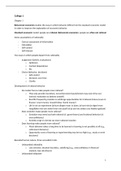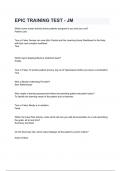Summary
VOLLEDIGE TENTAMENSTOF: samenvatting colleges + boek microeconomics and behaviour UEC10406
- Course
- Institution
- Book
Volledige tentamenstof met een samenvatting van de hoofdstukken van het boek voor het tentamen en de colleges. Na de college aantekeningen staat de samenvatting van het bijbehorende hoofdstuk.
[Show more]













